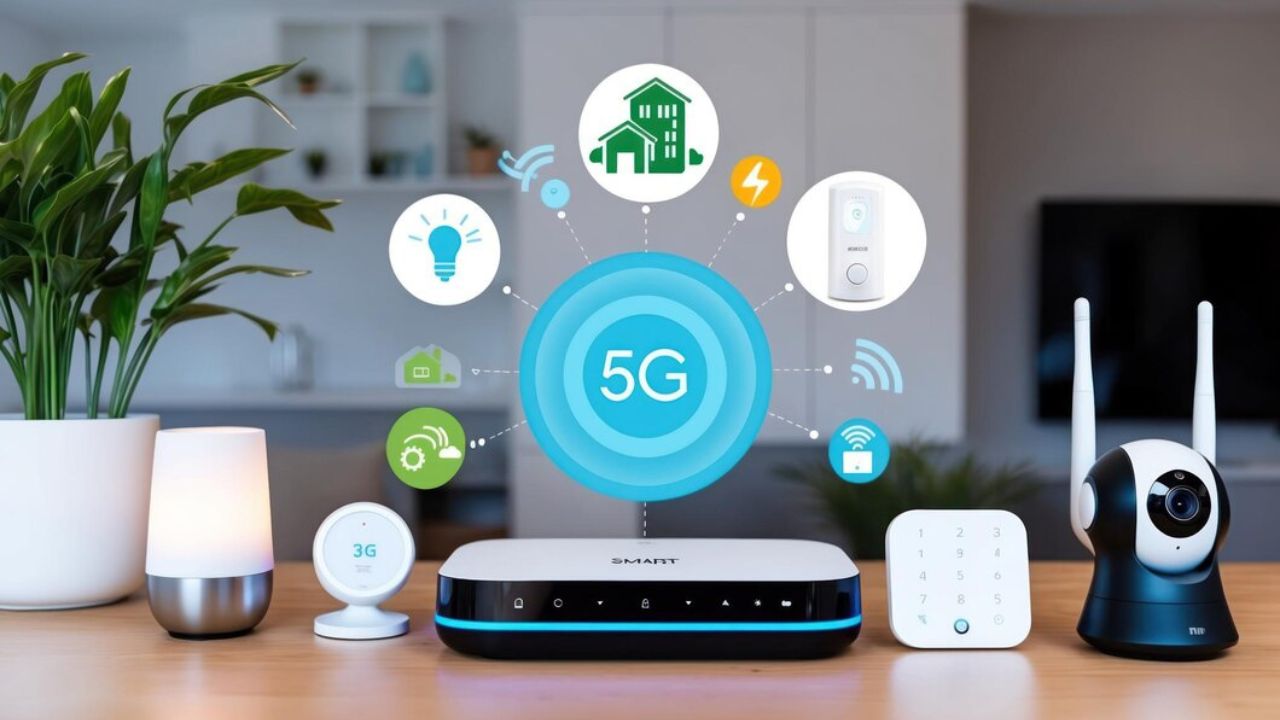The advancement of technology continues at an astounding rate, and 5G is one of the most significant leaps in recent years. Specifically, the benefits of 5G for IoT devices are transforming how machines, applications, and even industries operate. While 4G networks propelled the digital age, 5G introduces new opportunities by elevating the connectivity and capability of IoT (Internet of Things) devices. Enhanced data speeds, reduced latency, and more reliable connectivity are just the start of its potential. These enhancements promise to change how businesses, cities, and even our daily lives integrate with IoT technologies.
Understanding IoT and 5G: A Symbiotic Relationship
IoT devices, which range from smart thermostats and fitness trackers to industrial sensors and autonomous vehicles, depend on fast and reliable network connections to function efficiently. The more IoT devices grow in popularity, the more critical it becomes to have a network capable of handling billions of connections simultaneously. This is where 5G technology steps in.
5G networks are designed to be faster and more responsive than previous generations, and these improvements create a more capable environment for IoT devices. The potential of this symbiotic relationship between IoT and 5G is enormous. As IoT devices proliferate in both personal and professional spaces, 5G will provide the infrastructure needed to support a future where everything is interconnected seamlessly.
Faster Data Speeds for Seamless IoT Operations
One of the most immediate benefits of 5G technology for IoT devices is its significantly faster data transmission speeds. For context, 5G can deliver speeds up to 100 times faster than 4G LTE. This means that IoT devices can exchange data much quicker, which is especially important for applications requiring real-time communication.
Imagine a smart factory where machines need to communicate with one another instantaneously to ensure optimal performance. Faster data speeds enable these devices to share large volumes of information without lag, reducing downtime and increasing operational efficiency. Whether it’s autonomous vehicles needing instant updates on road conditions or healthcare devices monitoring patient vitals in real-time, the improved speed of 5G enhances performance across the board.
Reduced Latency for Real-Time Applications
Another game-changing feature of 5G is its ultra-low latency. Latency refers to the time it takes for data to travel between devices. With 5G, latency is reduced to as little as one millisecond, which is almost imperceptible to the human brain. This ultra-low latency is critical for IoT applications that require real-time processing and responses.
In sectors like healthcare, where precision is paramount, reduced latency allows for technologies such as remote surgeries and real-time patient monitoring. Similarly, autonomous vehicles rely heavily on fast data processing to make split-second decisions on the road. 5G enables these systems to process vast amounts of data quickly, ensuring the vehicles react in real-time to avoid potential hazards. Reduced latency also benefits industries like manufacturing, where machines can synchronize tasks in real-time for smoother and more efficient operations.
Increased Device Capacity for a Growing IoT Ecosystem
As the number of IoT devices continues to grow, the demand for a network that can support a vast number of connections becomes more pressing. 5G networks address this need by offering significantly greater device capacity than previous generations. This means that cities, businesses, and households can deploy more IoT devices without compromising on performance or connectivity.
Smart cities, for example, rely on thousands of connected devices to monitor traffic, manage utilities, and enhance public safety. 5G allows these devices to function simultaneously, sharing data quickly and efficiently. The increased capacity also means that businesses can scale their IoT implementations without worrying about network congestion or data bottlenecks. From agricultural sensors monitoring crop conditions to connected homes adjusting energy use in real-time, 5G ensures that every device stays connected and functional.
Enhanced Energy Efficiency for Longer-Lasting Devices
Energy efficiency is a major concern for IoT devices, especially those deployed in remote locations where changing or recharging batteries can be challenging. Thankfully, 5G technology helps address this issue by offering enhanced energy efficiency. IoT devices on 5G networks can operate in low-power modes when not actively transmitting data, extending the lifespan of their batteries.
For industries like agriculture or environmental monitoring, where devices may be spread across large, hard-to-reach areas, this extended battery life can make a significant difference. Sensors can continue to transmit vital information over long periods without needing frequent maintenance or battery replacements. Additionally, enhanced energy efficiency makes it easier to deploy IoT devices on a larger scale, further expanding the reach and capabilities of smart solutions.
More Secure IoT Networks
As more devices become interconnected, the risk of cyberattacks increases. Security concerns remain a top priority for businesses and individuals adopting IoT solutions. 5G technology provides enhanced security features that can help mitigate these risks, ensuring that IoT networks remain safe from potential threats.
One key security advantage of 5G is network slicing, which allows service providers to create multiple virtual networks within a single physical infrastructure. Each slice can be tailored to the specific needs and security requirements of different IoT applications. For example, a network slice used for critical infrastructure like healthcare can be optimized for high security and reliability, while another slice used for less sensitive applications can prioritize speed and cost-efficiency. This segmentation helps ensure that IoT devices remain protected, even as the number of connected devices grows.
Driving Innovation in Industries and Smart Cities
The introduction of 5G for IoT devices is not just about improving existing systems; it’s also about fostering innovation. As 5G networks become more widespread, new IoT applications and industries are emerging. Smart cities, for example, are poised to benefit enormously from the deployment of 5G-enabled IoT devices. From smart traffic management systems that reduce congestion to smart energy grids that optimize electricity use, 5G is helping to transform urban environments.
In healthcare, 5G-enabled IoT devices are revolutionizing patient care. Remote monitoring devices, telemedicine applications, and AI-driven diagnostic tools are becoming more effective thanks to faster data transfer and reduced latency. This allows healthcare providers to deliver more personalized and timely care to patients, improving outcomes while reducing costs.
Similarly, in manufacturing, 5G is driving the adoption of smart factories where machines communicate with one another to optimize production processes. Predictive maintenance, powered by IoT sensors, allows factories to identify potential issues before they cause downtime. As a result, businesses can increase productivity and reduce operational costs.
Scalability and Flexibility for Businesses
Businesses across industries are finding new ways to leverage the power of 5G for their IoT deployments. One of the most significant benefits is the scalability that 5G offers. Companies can expand their IoT networks without worrying about the limitations of bandwidth, device capacity, or network congestion. This scalability allows businesses to innovate more freely, experiment with new IoT solutions, and adapt to changing market demands.
The flexibility of 5G networks also enables businesses to implement IoT solutions tailored to their specific needs. Whether it’s a small-scale deployment in a retail environment or a large-scale network in a smart factory, 5G can support a wide range of applications. This flexibility empowers businesses to optimize their operations and provide better services to customers.
Improving the Customer Experience with 5G and IoT
The benefits of 5G for IoT devices extend beyond industries and businesses; they also significantly enhance the customer experience. Consumers now expect faster, more reliable, and more personalized services from the brands they interact with. 5G enables businesses to meet these expectations by powering a new generation of smart devices and services.
For example, smart homes equipped with 5G-enabled IoT devices offer consumers a seamless experience where everything from lighting to temperature control is automated and optimized for convenience. In retail, 5G-powered IoT systems can deliver personalized shopping experiences through smart shelves, interactive displays, and real-time inventory management. As a result, consumers benefit from faster, more personalized, and more convenient services.
Looking Ahead: The Future of 5G and IoT Devices
The benefits of 5G for IoT devices are already evident, but the future holds even more promise. As 5G networks become more widespread and advanced, we can expect new innovations that further enhance the capabilities of IoT devices. Industries, cities, and consumers will all benefit from faster data speeds, lower latency, and more reliable connectivity.
In the coming years, we will likely see more widespread adoption of autonomous vehicles, smart cities, and connected healthcare systems, all powered by 5G technology. Businesses will continue to explore new ways to leverage the power of IoT and 5G, creating smarter and more efficient operations. The potential is limitless, and we are only at the beginning of this exciting technological revolution.
FAQs
How does 5G improve IoT device performance?
5G improves IoT device performance by offering faster data speeds, lower latency, and increased device capacity. This enhances real-time communication and enables the deployment of more devices.
Why is low latency important for IoT devices?
Low latency is crucial because it allows IoT devices to process data and respond in real-time, which is essential for applications like autonomous vehicles and remote surgeries.











